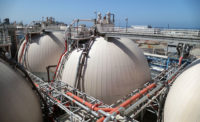California Gov. Gavin Newsom and legislators on June 21 reached a budget deal which promises to keep in place current spending for K-12 schools and community colleges. This is good news for contractors looking for a post pandemic rebound in the form of school bond projects.
California Forward (CA Fwd), a non-profit organization advocating “prosperity across the state,” says there are approximately $34 billion in voter approved unsold bonds that should be expedited for shovel ready projects that are in the approval pipeline. “Of that, $24 billion sits in school, higher education and water resource related facilities,” said Fred Silva, director of public policy and Micah Weinberg, chief executive – both of CA Fwd – in a news release. “For example, K-14 school bonds already approved by voters can be used for school construction projects that are already in the queue.”
One of the biggest players in Southern California is Los Angeles Unified School District (LAUSD), which has a voter-approved bond program currently valued at $27.5 billion.
The District’s Facilities Services Division (FSD) is currently managing more than 650 projects in pre-construction valued at $3.7 billion and 220 projects under construction valued at $1.6 billion, says Mark Hovatter, FSD’s chief facilities executive. They are currently anticipating more than 120 additional projects with a combined construction value of nearly $900 million that will be advertised over the coming year, says Hovatter. Together these projects total $1.3 billion.
“Los Angeles Unified will be making important and long overdue upgrades and modernizations to our local public schools while generating thousands of construction-related jobs in Southern California,” says Hovatter. “Over the next year alone, we expect these projects to create approximately 16,000 construction jobs, making meaningful progress in the region’s economic recovery.”
“The existing Facilities Services Division and School Upgrade Program bonds with LAUSD have certainly kept AGC of California’s member companies busy in the Los Angeles region,” says Kate Mergen, associate vice president of government affairs for AGC of California.
One AGC member company is Anaheim, Calif.-based Pinner Construction Co., which has completed more than 70 new construction and modernization projects with the District over the past 100 years. Current LAUSD projects for Pinner include the nearly $150 million revamp of Ulysses S. Grant High School, scheduled for completion in 2024; and the $54 million upgrade to Shenandoah Elementary School, set to complete at the end of 2023.
“Over the past 2 decades, LAUSD projects have played a large role in the local construction market and has been a source of good, stable work for small as well as disabled veteran business enterprises, especially during economic downturns,” says Justin Davis, president of business development for Pinner.
The FSD, responsible for the execution of the LAUSD’s construction bond programs, covers
710 sq-miles with more than 21 thousand buildings totaling more than 75 million sq-ft. This includes 1,180 K-12 schools and 122 other schools and centers, with a total student enrollment of 734,640.
The FSD says it is currently planning to put more than 120 new bond program projects out to bid between June 2020 and June 2021. These include comprehensive modernization projects at four schools and seismic modernization projects at five schools, as well as numerous projects that will take care of access compliance, campus improvements, gym renovations, fire alarm installations, and much-needed upgrades to outdated roofing, flooring, electrical, and HVAC infrastructure.
“The LAUSD program is fairly aggressive, with hundreds of schools slated to be upgraded to meet the new technology demands,” says John Hakel, executive director of Southern California Partnership for Jobs, an organization that advocates for improved infrastructure funding and the creation of career construction jobs.
Hakel says he meets regularly with the LAUSD to find out what they might need from the construction industry, and to let them know what new ideas and techniques the industry might have to offer the district for its projects.
“I think LAUSD having the opportunity with their bond program will afford them capital to help during these uncertain times,” says Hakel. “There will be opportunities for the general contractor community and the unions to work in tandem with LAUSD to acquire high-quality professional union members. Given this dynamic, LAUSD will assist in the potential reduction in the unemployment rate that will reboot construction opportunities in Southern California.”






Post a comment to this article
Report Abusive Comment